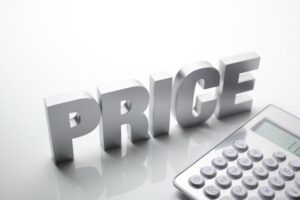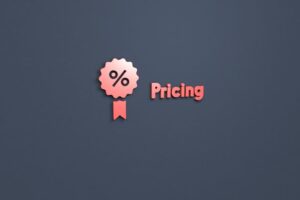Usage-based pricing is a payment model in which clients are charged depending on how much they use a service or product rather than a set cost. It is common in areas like cloud computing, telecommunications, and streaming services since it lets consumers pay only for what they use, providing flexibility and potentially lowering expenses.
This pricing method gained popularity for its clear focus on the customer’s needs. Consider electricity bills as an example: we pay based on the power we consume, not a flat fee, regardless of our usage. The concept of usage-based pricing can be traced back to pay-as-you-go phones, where customers were charged only for the minutes they talked or the texts they sent.
When we look at today’s online services, the usage-based pricing style fits especially well with software programs. This pricing model is quickly gaining momentum, and according to Invesp, 38% of SaaS providers currently charge based on usage.
SaaS Usage-Based Pricing Industry
In SaaS, usage-based pricing often translates to pricing based on the number of API calls, the amount of data storage used, or other quantifiable metrics.
As cloud computing and digital transformation become universal, SaaS companies are reaping the benefits of this model. This pricing method allows them to cater to a broader range of clients, from startups to large enterprises with varying usage needs.
Examples of Usage-Based Pricing
Amazon Web Services (AWS) has utilized a pricing model based on usage since its inception. Along with data storage, they offer pricing tiers based on access frequency.
Consumers pay only for the computing power, storage, and other resources they utilize, with no long-term contracts or upfront commitments.
AWS’s outstanding market share was 33% at the start of 2022, reflecting the model’s effectiveness in attracting and retaining customers.
Zoom is video conferencing software that offers a free basic plan. However, as users require more features or longer meeting durations, they must pay more. Pricing is directly proportional to demand. (check Zoom pricing review)
Dropbox is another example of businesses utilizing the usage-based pricing strategy. The company offers a free basic storage plan for cloud storage.
When users require more storage space or additional features, they switch to a paid model that is based on the amount of storage used.
Ride services companies like Uber and Lyft do not charge a fixed price for a ride. Instead, they calculate charges based on the distance traveled and the time taken, ensuring that users pay exactly for the service they receive.
MORE: What types of pricing strategies are there?
Advantages of Usage-Based Pricing
Fairness and Flexibility
Imagine going to a buffet and paying only for the exact amount of food you ate instead of a flat fee. That’s the essence of the usage-based approach.
Example: Dropbox and Google Drive reflect this by offering a variety of plans, so you only pay for what you use, whether you’re storing a few important documents or an entire library of photos.
The flexibility of SaaS usage-based pricing ensures that users, whether individuals or businesses, get real value for their money.
MORE: Learn about value-based pricing
Wider Customer Base
Usage-based pricing strategy is a game-changer for startups and small businesses with its “try before you buy” approach.
This strategy broadens a company’s appeal, making it accessible to both budget-conscious startups and large enterprises.
Example: Platforms like Zapier understood this well. By offering a free tier, they allowed small teams to try out their service. And as these teams found value and grew, they naturally moved to paid subscriptions.
Aligning Business and Customer Interests
In a usage-based model, the success of a business is directly tied to the satisfaction and usage of its customers.
Example: Twilio is a prime example; charging based on the number of API calls or messages ensures that their interests align with the customers.
The more value customers get from the service, the more they use it, and consequently, the more revenue generated for the company. This symbiotic relationship ensures companies are constantly striving for excellence.

Disadvantages of Usage-Based Pricing
Revenue Insecurity
With usage-based pricing, businesses must contend with variable monthly income.
Because customers can adjust their consumption at will, you cannot guarantee a steady revenue stream.
Predicting future earnings is also tougher since customers can reduce their spending anytime.
This uncertainty can make establishing budgets, making informed business decisions, and planning for future expansion challenging.
Pricing Complexity
It is not always obvious which metrics to base pricing on, and doing so incorrectly can deter potential customers.
For instance, should streaming platforms charge based on the number of hours streamed, the number of programs viewed, or the amount of data consumed?
If your customers lack a clear understanding of the value metric to which their charges are tied, they may become frustrated and confused.
Consequently, achieving a balance between customer fairness and profitability becomes a difficult task, frequently demanding extensive market research and regular adjustments.
Customer Uncertainty
Customers without knowledge of the price structure’s work may be concerned about accumulating expenses. The concern might prevent them from making the best use of your services.
For example, if users believe that using high-quality features of a graphical design program would cost them more money, they could simply avoid using them.
Advantages and Disadvantages at a Glance
| Advantages of Usage-Based Pricing | Disadvantages of Usage-Based Pricing |
| Fairness and flexibility. | Revenue insecurity for businesses. |
| Wider customer base. | Pricing complexity. |
| Aligning business and customer interests. | Customer uncertainty of the pricing structure. |
4 Tips for Implementing Usage-Based Pricing
1. Transparency is important
Customers need to know what they are being charged for. Provide clear information about price changes and clear descriptions of bills to build trust in your business.
Example: Cell phone providers give customers thorough breakdowns of how much data they use to ensure that their customers know where their money is going.
2. Regularly Review and Adjust
The way the market works, what customers say, and how people use things can change. Companies must monitor these things and change their prices to reflect them.
Example: After watching how people used Spotify, the company devised different plans, like the Duo and Family packs. These plans take into account how different user groups use Spotify.
3. Provide Usage Insights
Helping people track and plan how much they use is good for customers and your business. Ensure there are tools to track customer usage expenses so there are no shocks at the end of the billing session.
Example: Amazon Web Services (AWS) provides detailed dashboards that enable users to monitor their usage in real time. This allows users to forecast their monthly expenses while keeping a close eye on their resources.
4. Set Usage Limits or Levels
To keep customers from being surprised by their bills, it’s smart to limit how much they can use or offer tiered prices.
Example: ISPs let you roll over your data or give you extra data after using a certain amount. Setting limits helps users feel like they’re getting good value and protects them from unexpected charges.
Who is Usage-Based Pricing Best For?
Businesses with Diverse Customer Usage Habits
Usage-based pricing ensures that each customer in a group with diverse needs feel they are getting good value for money because they only pay for what they consume.
Businesses Looking to Penetrate New or Competitive Markets
You can attract a section of the market unwilling to commit to set, high-cost plans by allowing clients to pay only for what they use.
Consumers with Changing Needs
On the consumer side, usage-based pricing is ideal for those whose demands vary monthly.
Businesses That Value Customer Trust
Businesses that value developing solid and honest relationships with their consumers may discover that usage-based pricing accords with their values. In the long term, this can enhance client loyalty and retention.
Does Usage-based Pricing Make Sense For Your Company?
While usage-based pricing has various advantages, businesses must conduct a complete study before making the switch, considering their target market, infrastructure capabilities, and long-term goals. Some things to consider include:
- Usage-based pricing appeals to a wide range of customers. If you are a startup or a small business with changing needs, this strategy can be a lifesaver.
- This pricing model can develop trust. Customers who see a direct line between their usage and their bills are more likely to feel in control and valued.
- On the business side, it can motivate your company to continually provide excellent services, knowing that your revenue is directly related to customer satisfaction and engagement.
- It is not an all-encompassing solution. Switching to usage-based pricing necessitates a solid infrastructure for reliable tracking and billing.
- With usage-based pricing, which might fluctuate depending on user consumption, it becomes more challenging to anticipate revenues.
Key Takeaways
Usage-based pricing is a transformative pricing strategy. By aligning costs directly with consumption, consumers get value for their money, paying only for what they use.
This approach provides consumers with unmatched flexibility and motivates businesses to deliver high-quality services consistently.
Understanding and potentially utilizing usage-based pricing will be crucial for businesses looking to stay competitive and customer-centric as industries evolve.
For more information on SaaS pricing and pricing strategies, visit our SaaSGenius pricing site.
Related Posts
Frequently Asked Questions (FAQ)
Author
Methodology
- Who?
We are SaaS experts: Our specialists constantly seek the most relevant information to help support your SaaS business. - Why?
We are passionate about users accessing fair SaaS pricing: We offer up-to-date pricing data, reviews, new tools, blogs and research to help you make informed SaaS pricing decisions. - How?
With accurate information: Our website manager tests each software to add a Genius Score using our rating methodology to each product. Our editorial team fact-check every piece of content we publish, and we use first-hand testing, value metrics and leading market data.









